If you were to construct a giant dome over the Houston campus of Rice University, you’d have a pretty good museum of architectural movements over the last century. The school, which was founded in 1912, has been a patron of ambitious architecture from the start, with its very first buildings, designed by Ralph Adams Cram, a sui generis mashup of historic styles. Recent projects by Michael Maltzan, KieranTimberlake, and Rogers Partners join a legacy of name-brand architecture.
The latest addition to this tradition comes from the German-American firm Barkow Leibinger. “Rice is kind of an incubator for architecture,” says Frank Barkow, a founding partner. The firm’s 148,000-square-foot Sid Richardson residential college, completed earlier this year, is a trio of linked structures (two, five, and 12 stories) that sits alongside the building it was commissioned to replace, a 14-story Brutalist tower designed by the Houston firm Neuhaus & Taylor, which opened in 1971. The future of this decommissioned tower is undetermined, though Barkow would like to see it repurposed. “Our building is very much in dialogue with it,” he says, noting that the new college structure wraps around it on two sides. “It would be my hope to save it.”
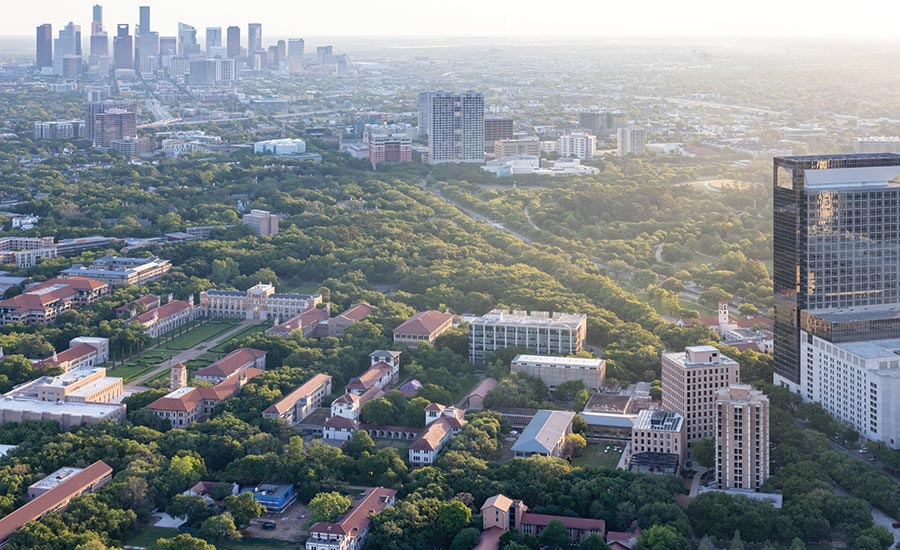
The new complex establishes a dialogue with the existing Brutalist tower (at right in photo). Photo © Iwan Baan, click to enlarge.
The new complex deftly negotiates the relationship between the bucolic Rice campus, with its broad quads lined by arcades and shaded allées of live oaks, and the towers of Houston’s Medical District, directly across Main Street. It manages this in both scale, with its structures stepping down in height, and in plan, by rotating away from the grid of the city and toward the grid of the campus.
It also makes subtle reference to the architectural legacy of the school; its interlocking volumes, with punched windows aligned in orderly formation, nod to the modernist tradition on campus, while its complex brickwork looks back to its earliest buildings and to its many Postmodern additions, in particular works by James Stirling and Michael Graves. It is nonetheless decidedly of this moment, free of flashy formalism and confident in its reserved modernism.
Like much of the architecture at Rice, “Sid Rich,” as it is known (it is named for the legendary Texas oil baron and philanthropist Sid Richardson, who was not an alum), is faced in warm St. Joe brick from New Orleans. But this was not the original intention. The project’s genesis came in 2017, when Barkow ran into Sarah Whiting—then the dean of Rice’s architecture school and now dean of Harvard’s GSD—at the Chicago Architecture Biennial. Whiting envisioned the new Sid Rich as a pilot project in mass timber, and invited Barkow Leibinger to submit for the job. The firm won the commission but, as it turned out, Houston’s building code precluded a mass timber building of 12 stories, and the idea was scrapped in favor of a concrete post-and-beam system faced with the traditional brick.
There is little that is conventional about those brick facades, however. They are articulated by alternating sections with distinct arrangements in a range of complementary colors—rose, red, orange, and gray. Zigzag and sawtooth patterns are more dramatic at the lower levels and then flatten out at higher elevations. “We spent a lot of time working out the brick modules so there would be as little cutting as possible,” says Barkow. The masonry was laid on-site and not prefabricated in panels. “We have good masons in Texas, so we took advantage.”
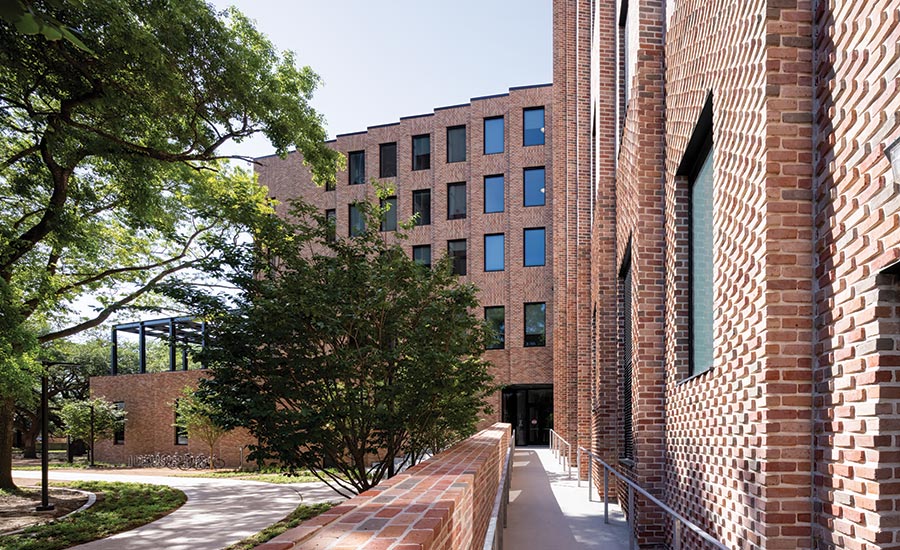
1
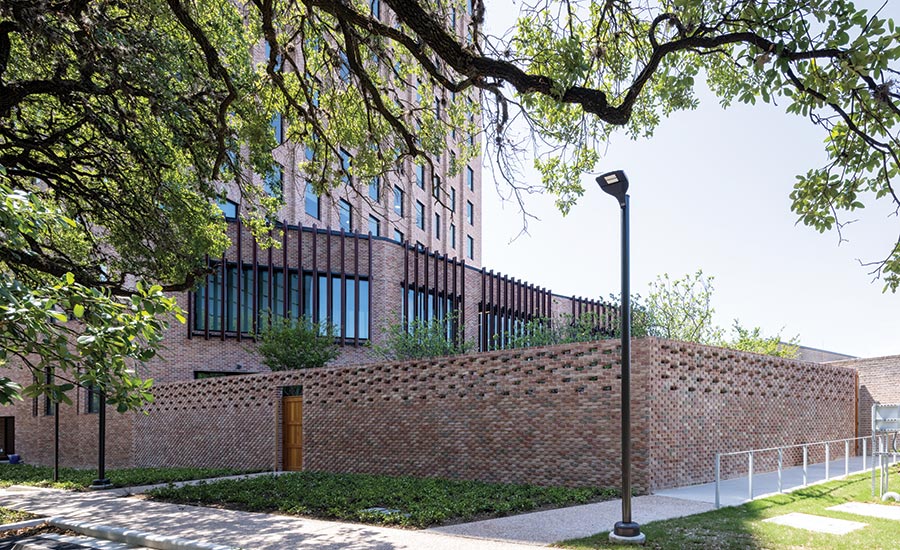
2
The brick’s distinct patterning and range of colors animate the facades (1 & 2). Photos © Iwan Baan
The facades shield a cavity wall and a sandwich of flashing and insulation, with a plywood layer and drywall interior face. A ceramic brise-soleil of vertical fins provides shading to glass-fronted common areas on the lower levels of the complex, adding definition to the exterior while subtly modulating the light within.
The goal is for the college to achieve a LEED Silver standard, though Rice did not require certification. Elements contributing to the building’s sustainability include photovoltaic arrays on roofs, rainwater collection, and the use of shaded arcades for circulation, in keeping with Rice tradition.
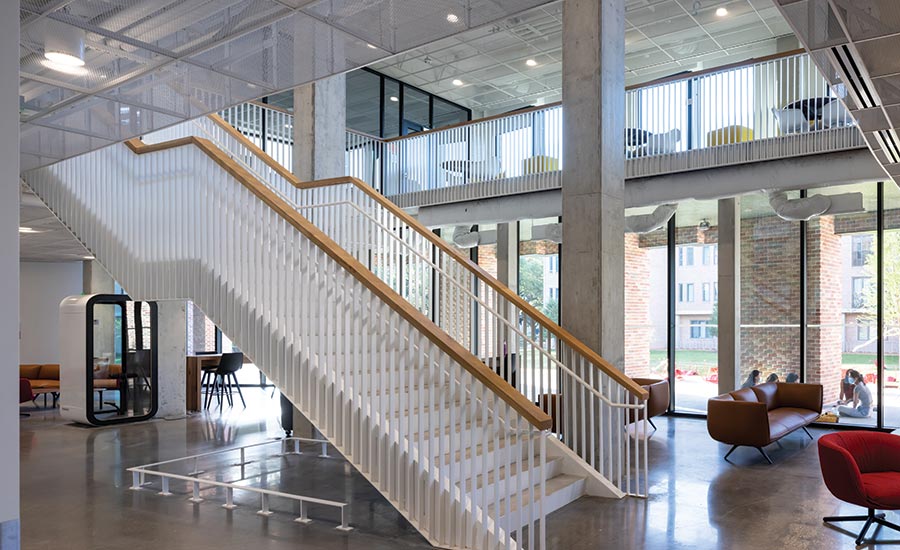
The lobby serves as a lounge and study area. Photo © Iwan Baan
The complex’s most architecturally dynamic interiors are the common areas that link the three buildings at their lower level, in particular the dining hall—a 300-seat space defined by a triangulated grid of concrete columns and exposed ceiling beams. A lattice of wood slats between the concrete beams provides acoustical dampening and is equipped with strip lighting set slightly askew to create a bit of visual play. The result is dramatic but also warmly inviting.
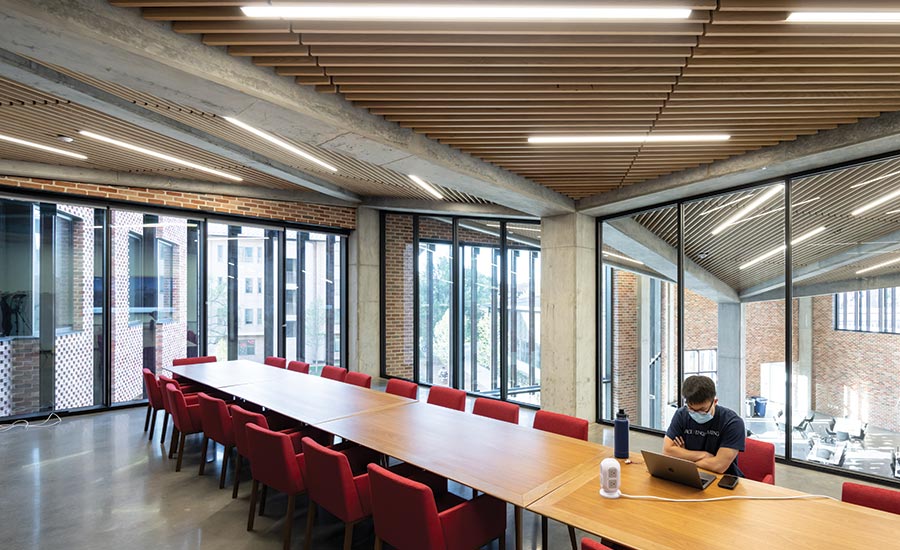
A flexible space looks down to the dramatic commons. Photo © Iwan Baan
The college provides “Sidizens” with 97 double units (each with its own bathroom) and 118 singles (which share common bathrooms), the dining hall, a duplex magister’s apartment, and three apartments for advisors.
While the 12- and five-story structures are predominantly residential, the two-story building houses workshops and makerspaces, with a roof terrace that serves as a central social space for the college. It is shaded by a space-frame pergola of blackened steel, with slats in fan formation, its language borrowed from the concrete frame of the lower levels.
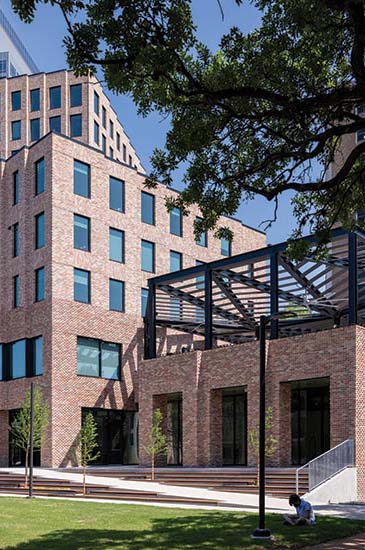
3
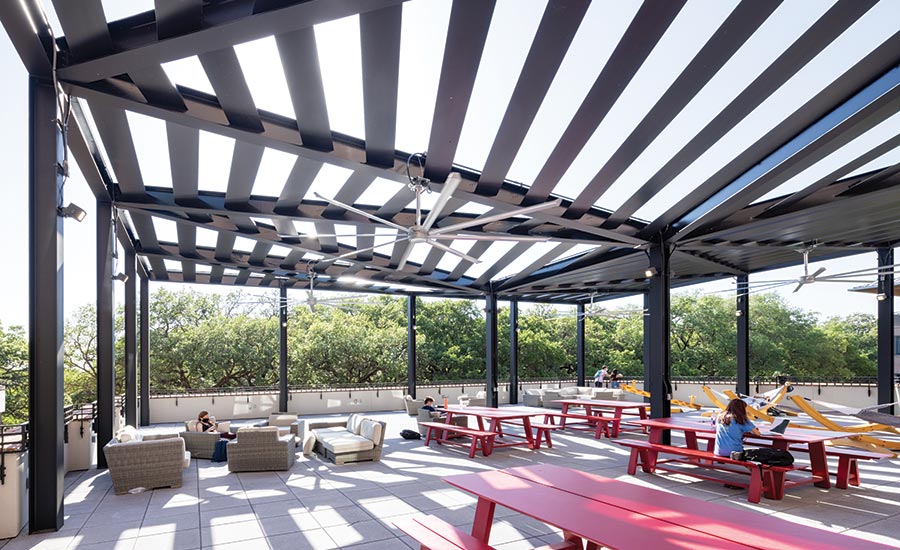
4
A raised terrace (3 & 4) provides a sheltered gathering space. Photos © Iwan Baan
Pleased with the results at Sid Richardson, Rice has commissioned Barkow Leibinger to expand a second residential college—one of the school’s first, Hanszen—designed as part of Cram’s original plan for the campus. That will present a challenge different from Richardson’s Brutalist legacy, but, this time, without a tower in play, the firm will have a chance to build in mass timber.
Click plan to enlarge
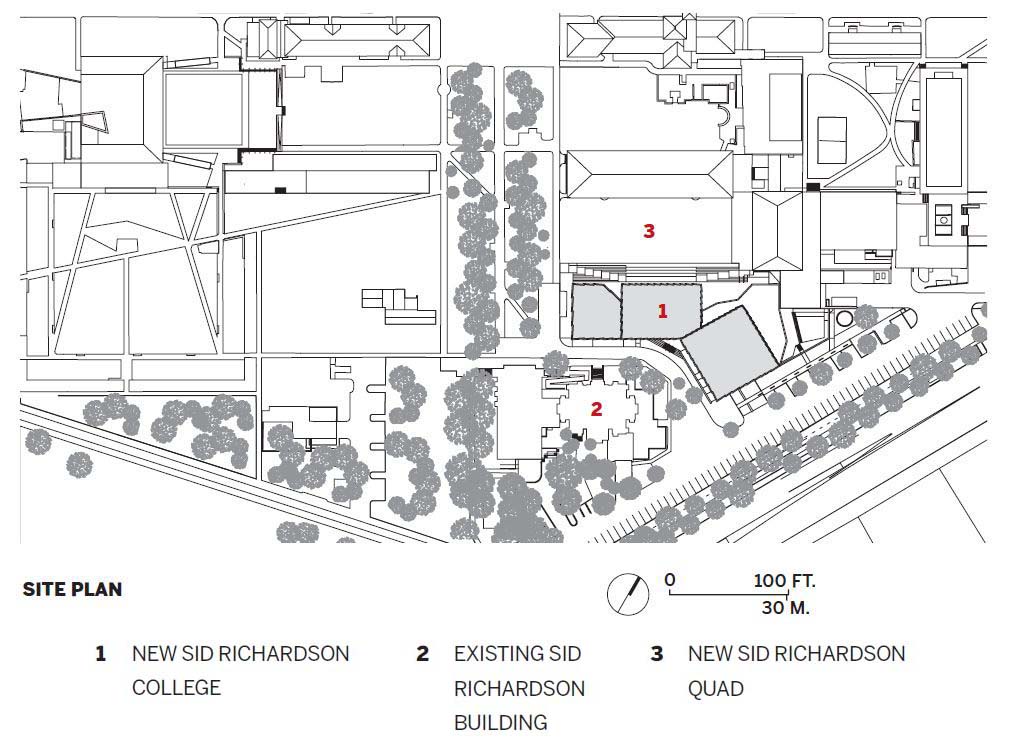
Click plan to enlarge
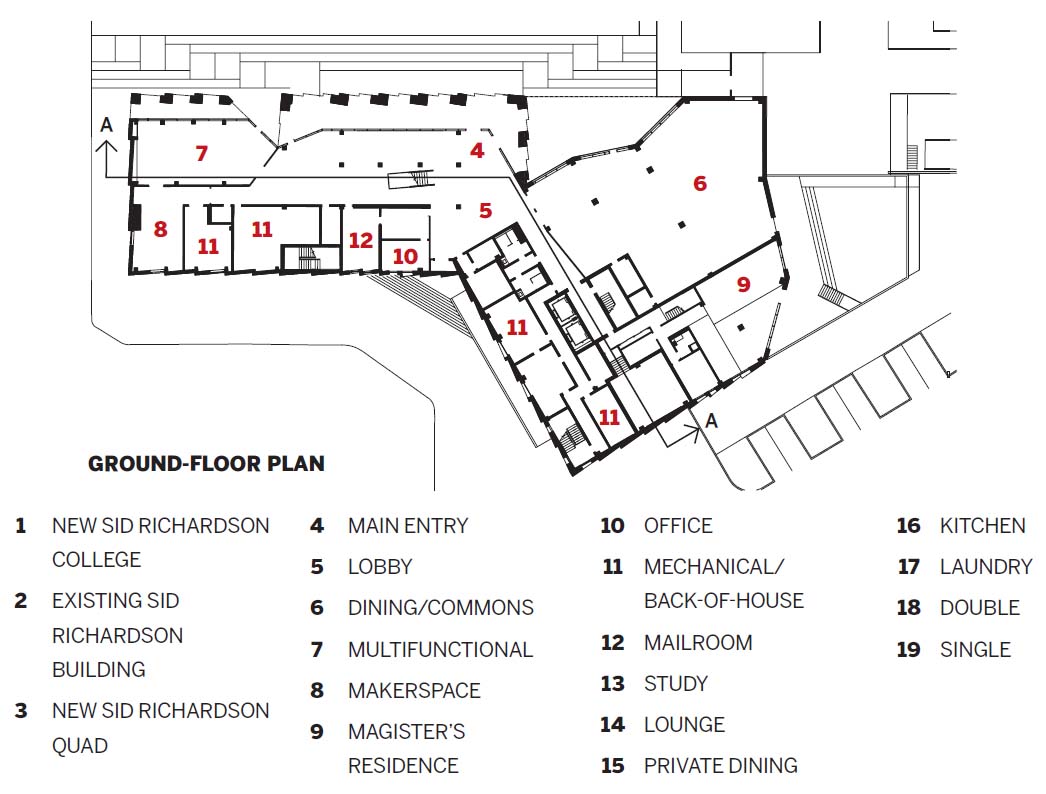
Click plan to enlarge
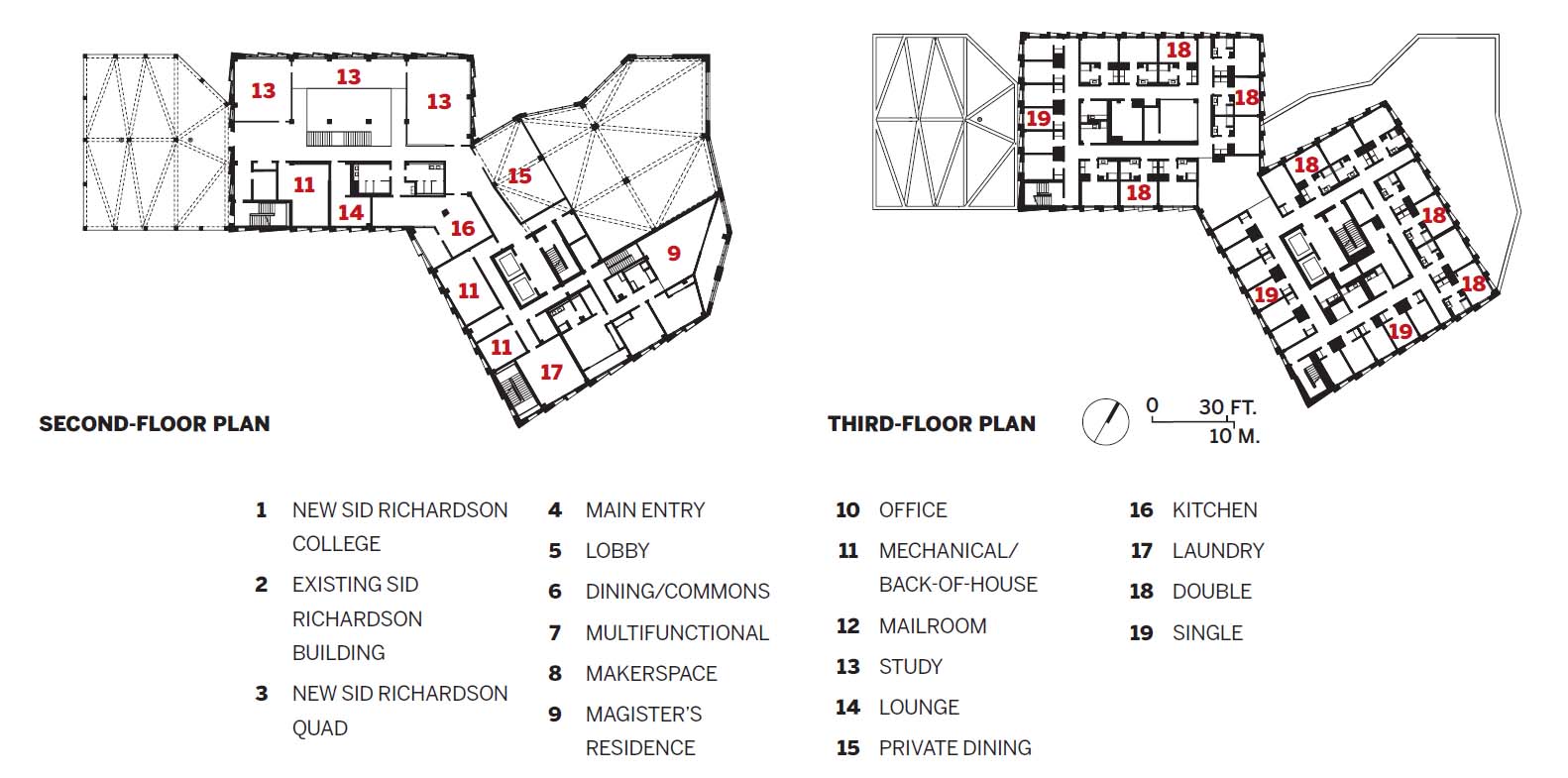
Click section to enlarge
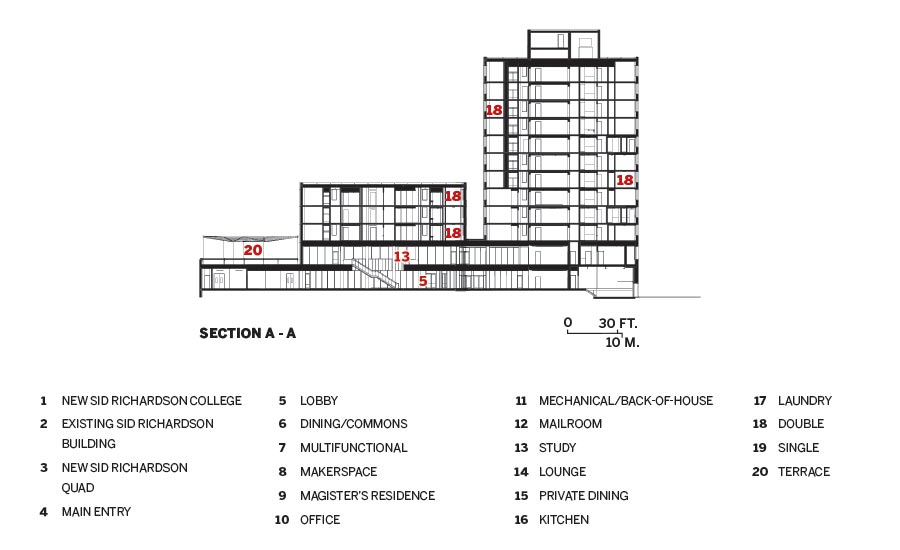
Credits
Architect:
Barkow Leibinger — Frank Barkow, Regine Leibinger, Martina Bauer, Emma Benintende, Jordan Berta, Deborah Chang, Evan Farley, Ian Miley
Architect of Record:
Kirksey Architecture
Consultants:
Knippers Helbig (structural design); Ensight Haynes Whaley (structural engineer of record); 4B Technology Group (technology & security); I.A. Naman + Associates (m/e/p); The Office of James Burnett (landscape)
General Contractor:
Anslow Bryant Construction
Client:
Rice University
Size:
148,000 square feet
Cost:
Withheld
Completion Date:
January 2021
Sources
Masonry:
St. Joe Brick Works
Curtain Wall, Windows:
Kawneer
Terra-cotta Louvers:
NBK
Glazing:
Vitro
Acoustical Ceilings:
Armstrong, Cardinal Acoustics
Floor & Wall Tile:
DalTile
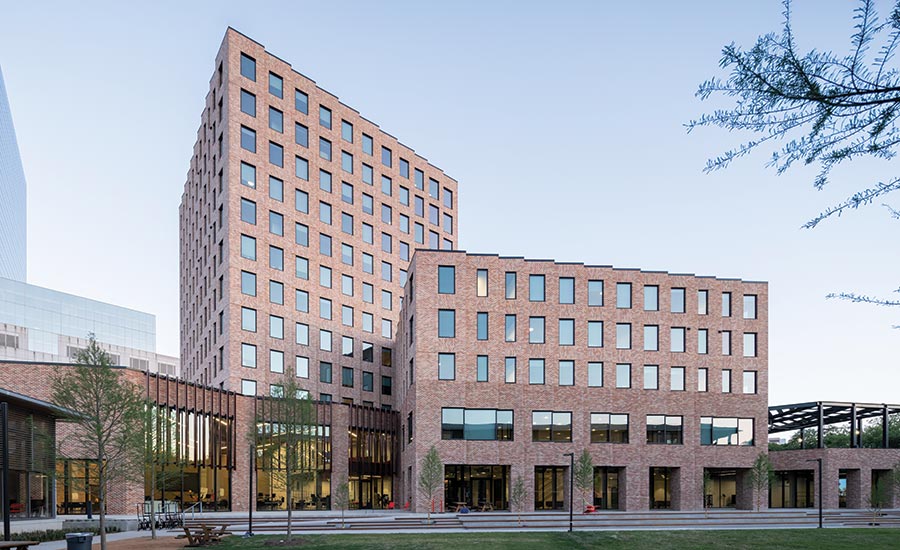

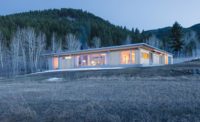
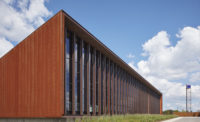

Post a comment to this article
Report Abusive Comment